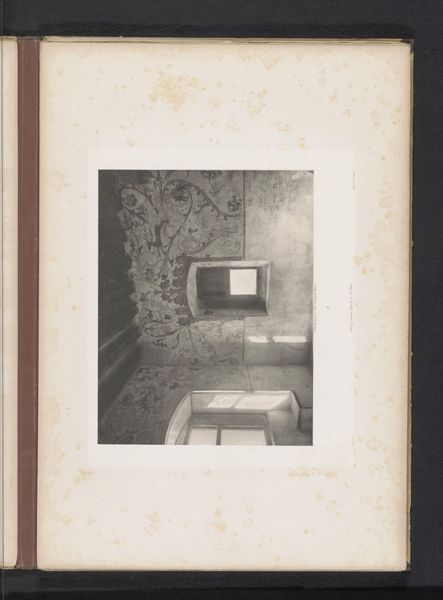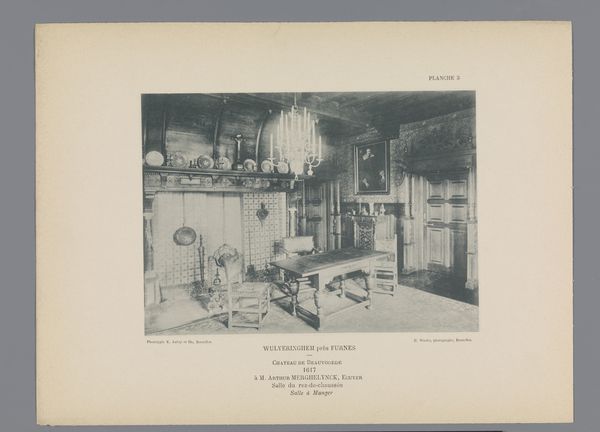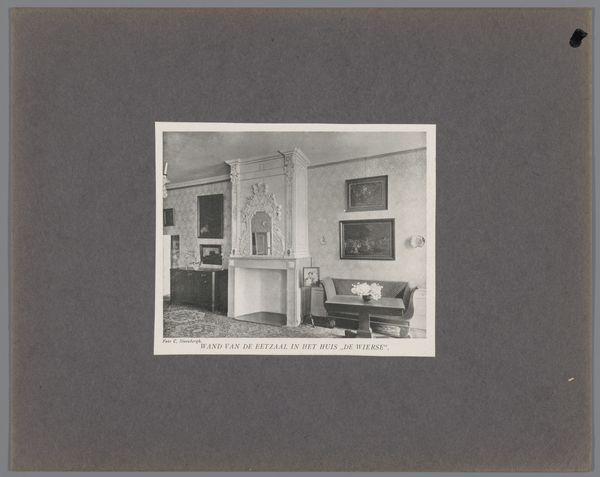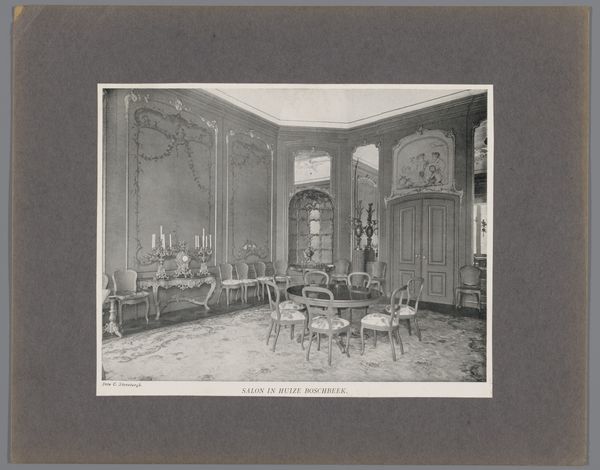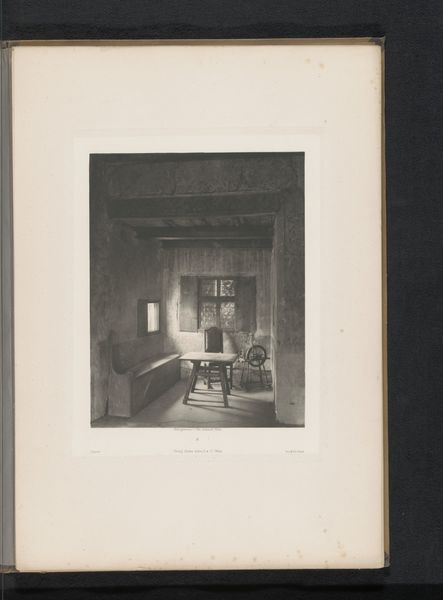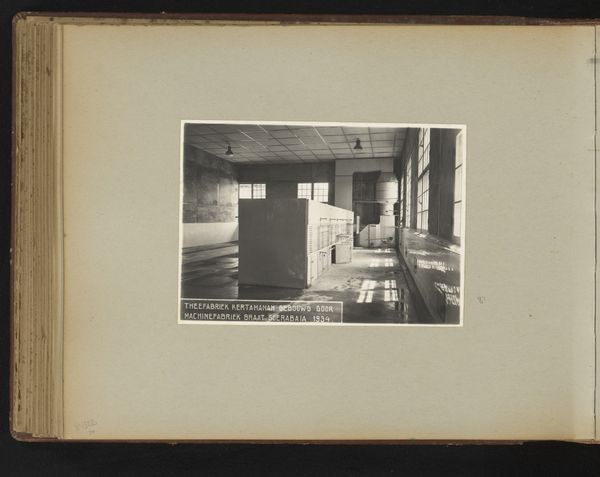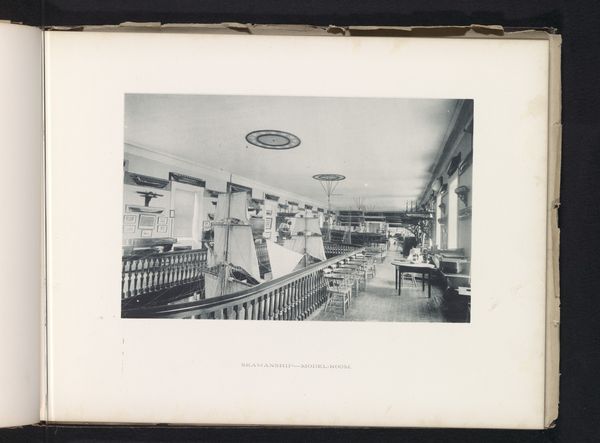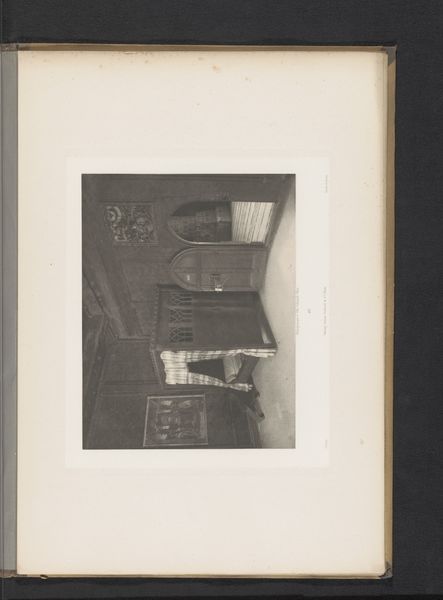
print, photography
#
portrait
#
table
#
aged paper
# print
#
landscape
#
photography
#
academic-art
#
realism
Dimensions: height 169 mm, width 213 mm
Copyright: Rijks Museum: Open Domain
Curator: The image before us, taken by C. Steenbergh, depicts the "Weesmeesterenkamer in het stadhuis van Enkhuizen," dating from around 1885 to 1900. It’s preserved for us as a print, documenting a specific historical room. Editor: Immediately, the stark, monochrome palette lends an air of gravity. The composition, divided by strong vertical lines and the dominating table, speaks of order and purpose. The scale seems designed to impress. Curator: Indeed. Orphan Masters' rooms, historically, were vital administrative hubs. They were places where decisions about vulnerable children were made, a purpose reflected in the imagery. Editor: Note how the ornate mural disrupts the formal lines. It seems to promise, from one end, a scene of domestic calm; on the other, a portrait above the mantle implies historical continuity—all contained in rigid architectural planes. It feels a dialectical conversation—history versus environment. Curator: The very presence of a grand mural signifies a particular aspiration—a claim of legitimacy and cultural grounding, echoing the power and importance the orphan masters sought to project. Landscape murals in interiors can represent notions of care and the broader world which has abandoned children at their doorsteps, but also act to ameliorate feelings of entrapment or institutionalisation. Editor: The table and sparse furnishings create a rather severe geometry, juxtaposed with the swirling, almost dreamlike, details of the mural and mantelpiece. It's visually compelling: severity is set against extravagance and embellishment. This also seems, stylistically, rooted in realism, particularly in its objective treatment of light. Curator: Steenbergh’s choice to capture this room immortalizes the social responsibility and cultural narratives woven into its architecture. This image now forms part of our collective cultural memory regarding the place. Editor: It gives me much to reflect upon: that still austerity offset against wild imagery and artistic style. It provokes. Curator: A room rendered meaningful by Steenbergh’s careful rendering—and, of course, our careful interpretation. Editor: Precisely—its continued dialogue with the eye makes it enduring.
Comments
No comments
Be the first to comment and join the conversation on the ultimate creative platform.

